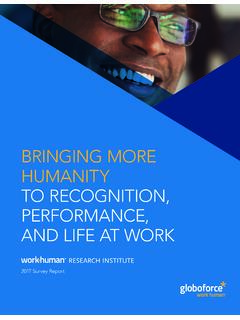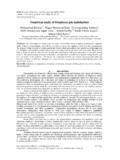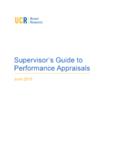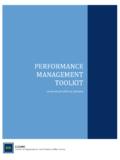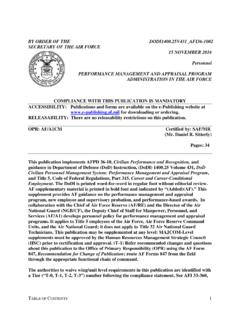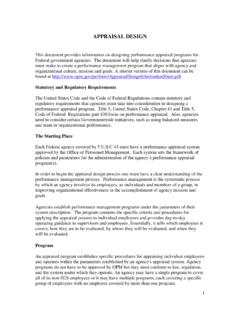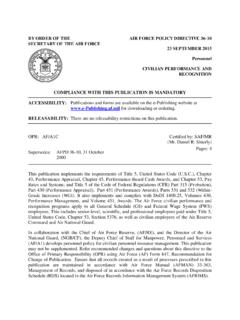Transcription of The Employee Experience Index - Globoforce
1 Thought Leadership WhitepaperIBM AnalyticsThe Employee Experience Index A new global measure of a human workplace and its impactThe Employee Experience Index2We then aimed to answer three questions: What is the ideal Employee Experience in today s workplace? What impact could a positive Employee Experience have on key outcomes? How can organizations drive more positive and human Employee experiences?The answers to these questions resulted in the development of a new Employee Experience Index alongside a set of leadership and organizational practices to create more positive Employee experiences. These new tools will enable HR and business leaders to inspire and energize their workforces towards greater well-being and are in the midst of a major transformation in the workplace. In the industrial era, the focus was on task-oriented laborers whose primary output came from their hands. In the information age, knowledge embodied in employees became a central component of the economy.
2 Now we are entering the cognitive era. In this new era, in which machines are able to learn, reason and interact with humans naturally,1 the boundaries between people and technology become than diminishing the role of people, in the cognitive era people are at the forefront of working with and realizing the benefits from new technologies to achieve more than was ever possible before. In fact, the cognitive era is just as much the human era. It is a time when work can be a more rewarding Experience for employees. Recognizing that the battle for the hearts and minds of employees is played out daily through their workplace experiences, organizations are now reexamining their employees Experience at work2 as a path to improved job performance3 and sustained competitive what is the ideal Employee Experience at work? The IBM Smarter Workforce Institute and Globoforce s WorkHuman Research Institute joined forces to conduct a major, global research study to find out.
3 As a starting point, we conceptualize Employee Experience as a positive and powerful and ultimately human Experience , in which employees are able to invest more of their whole selves into the Now we are entering the cognitive era. It is a time when work can be a more rewarding Experience for employees. 3 Development of the new Employee Experience IndexOur research studyTo understand and measure what makes an optimal working Experience for employees, industrial-organizational psychologists and experts in HR consulting from both IBM and Globoforce undertook a three-phase research study: Phase 1: Literature review and construct identification Using scientific literature in positive psychology, humanistic psychology and behavioral science as our starting point, we identified a number of constructs that relate to a more positive Employee Experience , and created a large pool of survey items to measure those constructs. Phase 2: Construct measurement To measure the Employee Experience constructs, a global survey of more than 23,000 employees in 45 countries and territories across many different industries and job functions was conducted.
4 The resulting data were then subjected to a series of statistical analyses to assess and validate the psychometric properties of the survey items and related constructs. Phase 3: Index and driver definitions Finally, the constructs and associated items were summarized into (1) an Index reflecting Employee Experience , and (2) key leadership and workplace practices that can be leveraged to positively affect Employee Employee Experience Index Following our review of the literature, we define the Employee Experience as: A set of perceptions that employees have about their experiences at work in response to their interactions with the this definition as a guiding framework, we developed a 5-dimension, 10-item Index to capture the core facets of Employee Experience . The Employee Experience Index measures: Belonging feeling part of a team, group or organization Purpose understanding why one s work matters Achievement a sense of accomplishment in the work that is done Happiness the pleasant feeling arising in and around work Vigor the presence of energy, enthusiasm and excitement at workHaving built the Index , our study went on to look at what drives Employee Experience and what outcomes organizations can expect when they create a more positive and human organization.
5 The framework for these relationships is shown in Figure 1. As the framework shows, Employee Experience has its beginnings in the direction and support of leaders and managers, who drive organizational practices that create the Employee Experience . Ultimately, a positive Employee Experience is associated with improved Employee outcomes such as better job performance, increased discretionary effort and higher retention. The Employee Experience Index4 Employee Experience linked to performance and retentionOur research reveals that employees who Experience a sense of belonging, purpose, achievement, happiness and vigor are more likely to perform at higher levels and contribute above and beyond expectations. They are also less likely to quit. Positive Employee Experience linked to better work performanceWorkers with Employee Experience Index scores in the top quartile are more likely to report high levels of work performancei than those whose scores are in the bottom quartile (23 percentage points higher) (Figure 2).
6 Figure 1. A framework of drivers and outcomes of Employee Experience at workiSelf-reported work performance was measured by respondents reporting that, in the last three months, they had been very productive at work, worked hard to get the job done on time, and completed work to a high 2. Employee Experience is positively associated with work performanceSource: WorkTrends 2016 Global sample for the IBM/ Globoforce Employee Experience Index Study (n=23,070)Note: The scores are reported as percent favorable, the average level of agreement across the three items that measure work and ManagementBehaviors and actionsHuman Workplace Practices Organizational trust Coworker relationships Meaningful work Recognition, feedback and growth Empowerment and voice Work-life balanceEmployee Experience Belonging Purpose Achievement Happiness VigorOutcomes Work performance Discretionary effort RetentionTop 25% highest Employee Experience Index scoresBottom 25% lowest Employee Experience Index scores96%73%Work performance5 Positive Employee Experience linked to more effortMore dramatically perhaps, employees with more positive experiences at work are much more likely to report significantly higher levels of discretionary effortii.
7 In fact, discretionary effort is almost twice more likely to be reported when Employee Experience is positive (95 percent compared to 55 percent) (Figure 3).The results of these analyses suggest a positive Employee Experience can contribute to higher motivation to apply extra effort at work and go above and beyond typical job effort refers to Employee activities that are beneficial to the organization but not necessarily part of the job. It was measured by respondents reporting that they were always willing to give more effort to get the job done, they enjoyed devoting a lot of extra effort to their work, and consistently went above and beyond what is expected of them at work. iiiTurnover intention was measured by respondents reporting that, within the next six months, they were seriously considering leaving their organization and planning to look for a new Employee experiences linked to retentionTalent retention is a challenging issue for many The good news is that a more positive Employee Experience could help.
8 Our analysis reveals that employees with low Employee Experience Index scores are more than twice as likely to say they want to leave compared to those with more positive experiences. The difference is more than 20 percentage points (44 percent vs. 21 percent) (Figure 4) and means that employees with positive experiences are 52 percent less likely to intend to leave their the ideal Employee experienceOur study has clearly made the case that Employee Experience matters. The question that naturally arises is what can organizations do to improve Employee Experience ? We examined two primary sets of driving factors leadership and workplace practices that can provide organizations with the tools and insight they need. A preliminary exploration of these workplace behaviors and practices is provided sets the stageLeaders and managers play a powerful role in setting the overall tone and direction of an organization, effectively setting the stage for a more positive Employee This begins with a high level of clarity around future direction and why employees matter in successfully moving the organization forward.
9 Figure 3. Employee Experience is positively associated with discretionary effort at workSource: WorkTrends 2016 Global sample for the IBM/ Globoforce Employee Experience Index Study (n=23,070)Note: The scores are reported as percent favorable, the average level of agreement across the three items that measure discretionary 25% highest Employee Experience Index scoresBottom 25% lowest Employee Experience Index scores95%55%Discretionary effortFigure 4. Positive Employee Experience is associated with lower turnover intentionSource: WorkTrends 2016 Global sample for the IBM/ Globoforce Employee Experience Index Study (n=23,070)Note: The scores above are reported as percent favorable, the average level of agreement across the two items that measure turnover 25% highest Employee Experience Index scoresBottom 25% lowest Employee Experience Index scores21%44%Intend to leaveThe Employee Experience Index6 Our data suggest there is room for improvement. For instance, 44 percent of employees do not feel their senior leaders are providing clear direction about where the organization is headed.
10 Providing more clarity would help senior leaders to more fully align employees and their behaviors with organizational goals. Managers also play a crucial role in creating a positive work environment, by providing a level of personalized support and commitment to their teams. More than one third (37 percent) of employees in our sample do not feel their managers were effective in serving and supporting the workplace practices make the experienceLeadership initiates momentum towards a positive Employee Experience , while workplace practices carry that momentum forward. Organizations are paying closer attention to the Employee Experience as a source of competitive advantage. At the same time, employees are bringing much higher expectations to the workplace and making greater demands of their work Practices that acknowledge the uniquely human qualities of the workplace address these new expectations. These practices can be viewed across multiple levels: environment, work and EnvironmentEmployees increasingly expect to trust their organizations to be responsible and act with integrity in dealing with all manner of stakeholders, including employees themselves.
